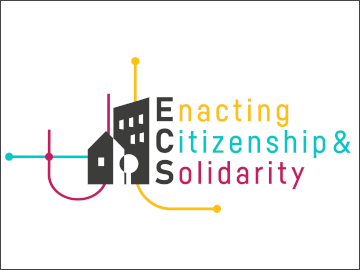Grassroots Community Kitchens as Practices of Collective Care
22. 10. 2025 | Politics

A new article has been published in the journal Urban Planning, titled “Cooking, Caring, and Commoning: Grassroots Community Kitchens Across Five European Cities” co-authored by Sandi Abram, Franz Bernhardt, Natascha Flückiger, Joana Lilli Hofstetter and Mouna Maaroufi. It explores collective cooking initiatives in Florence, Copenhagen, Ljubljana, Berlin, and Bern, examining how these initiatives cultivate care and commoning in times of multifaceted urban crises.
The article is a result of the EscEuro project, https://europefrombelow.net/.
You are warmly invited to read it here: https://www.cogitatiopress.com/urbanplanning/article/view/10145.
From ethnographic explorations, community kitchens emerge as forms of resistance against current urban conditions characterised by displacement, “care‐lessness,” precarisation, and individualisation. These five kitchen initiatives exemplify countermeasures to such developments, where acts of communal cooking and eating nurture a sense of commonality and collective power. Within them, acts of cooking and eating transcend the private sphere of reproductive work and become foundations for community engagement, offering insights into radical collective care and autonomous social infrastructures. These kitchens operate within a variety of contexts—ranging from a public park, a squat, a housing project, to a refugee and social centre—and are not easily identifiable as either private or public. Instead, they address a variety of concerns in specific socio‐spatial settings and attend to individual and collective needs. Thereby, the collective care for people and spaces extends into what we conceptualise as “direct care for the urban space.” Although the diverse and complex initiatives face challenges from external socio‐political conditions and internal ambivalences and conflicts, their experimentations remain essential; not only to prefigure futures built on collective relations and common infrastructures of care, but also because they convey a sense of belonging, mutual aid, and collective care in the here and now.
